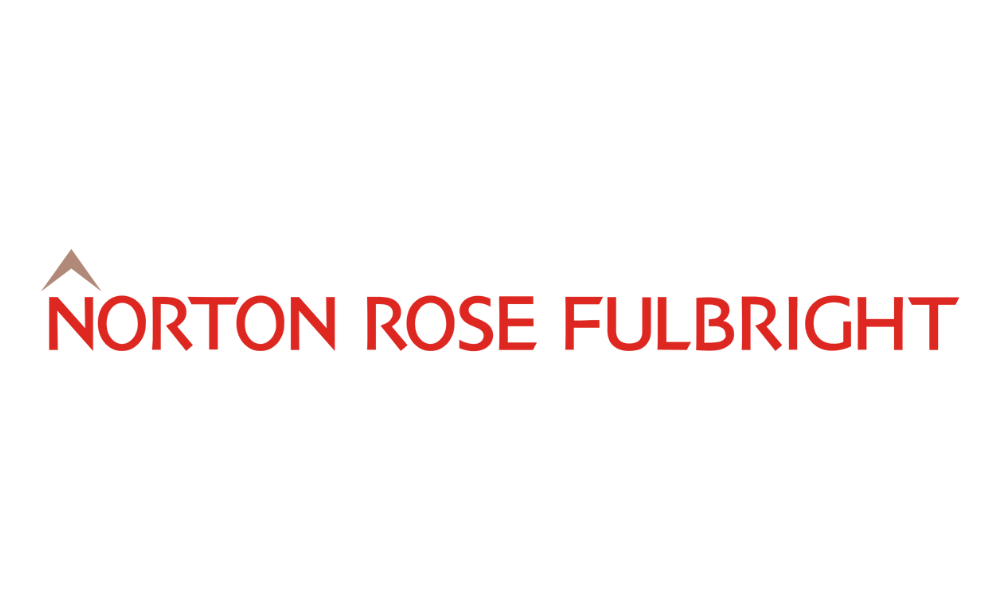The strong societal desire to implement reconciliation with Canada’s Indigenous peoples and generate commercial opportunities for Indigenous communities, and the relative lack of development on traditional Indian Act reserves particularly when located near growing urban centres, present opportunities for meaningful project development partnerships with Indigenous individuals, groups and communities. In this article, lawyers at Norton Rose Fulbright Canada identify and discuss key areas of interest to both Indigenous and non-Indigenous partners when forming these partnerships.
- What is a project development partnership with an Indigenous group?
A project development partnership with an Indigenous (First Nation, Inuit or Métis) group or Indigenous-owned company (Partnership) is an agreement between that group or company (Indigenous Partner), and a non-Indigenous entity (often a project proponent) to develop a project and divide some or all of the planning, developmental and operational responsibilities and profits. Just as projects are varied, so too are Partnerships. Understanding the potential challenges and benefits of Partnerships is essential to both Indigenous Partners and non-Indigenous project proponents.
In increasing numbers, Indigenous individuals and groups are founding and operating their own businesses. The 2020 Ontario Aboriginal Business Survey by the Canadian Council for Aboriginal Business records more than 50,000 Indigenous-owned businesses in Canada, with 12% of these being large community-owned firms. As Indigenous-owned businesses proliferate, so too does the opportunity for Partnerships. Several recent announcements of large, impactful Partnerships highlight their growing importance in the Canadian business landscape.
Recent Articles
Partnerships can also enhance engagement with Indigenous groups, thereby creating opportunities to use traditional knowledge both within the Partnership to enhance project design and operation, and more broadly to understand the project’s social and ecological effects.
Importantly, a Partnership allows for Indigenous Partners to share directly in the benefits of project development, whereas historically the group may have been excluded from participation. Non-Indigenous partners likewise benefit through the access to valuable commercial opportunities, receipt of financial, technical and social support, increased awareness of and appreciation for the cultural complexities of Indigenous peoples, and satisfaction with participating in the larger Canadian reconciliation objective.
- What types of business structures can be used for a Partnership?
The choice of business structure for a Partnership is a key decision that will define the challenges and benefits that arise from the Partnership and the working relationship of the parties. There are two types of structures that commonly arise: one in which the Indigenous Partner holds an equity stake; and, one in which the Indigenous Partner has participation or other rights but does not hold an equity stake. In our experience, most Partnerships include an equity stake for all project partners, though there are specific circumstances where a non-equity structure can work well. A Partnership may also include a mix of equity and non-equity partners.
Equity Structures
There are two different structures that are commonly used to allow for an equity stake for participating project partners: a limited partnership (LP) and a joint venture corporation (JVC). These corporate associations are not necessarily exclusive, with complex Partnerships potentially employing both.
An LP is the most common legal structure for equity investment by Indigenous Partners in Partnerships. Participants in an LP gain an equity stake by contributing to the capital of the LP, acquiring units or partnership interests in exchange for sharing in the net profits or losses of the LP. An LP provides corporate liability protection and often allows Indigenous Partners to retain preferential tax treatment for profits earned from the business. The terms of an LP are also customizable, within the bounds of provincial legislation, making them flexible. There are, however, drawbacks to the LP structure, as there are restrictions on limited partners’ exercise of management control and the requirement that an LP have a stated object and term.
A JVC may also be used in an equity-based structure. To set up a JVC, a new entity is incorporated and the members of the Partnership enter into a shareholders’ agreement setting out their respective interests in the JVC, including joint (although not necessarily equal) ownership and control. The operations of the JVC are managed by the officers and a board of directors appointed by the members of the Partnership, in accordance with the shareholders’ agreement and fiduciary duty requirements. Unlike an LP, a JVC does not need to have a stated objective or term, making it versatile for a long-term project that may shift in scope, or for a portfolio of projects. As a downside relative to an LP, however, the JVC is taxed as a distinct corporate entity, potentially upsetting any favourable tax treatment the participants could receive.
The contribution underpinning an equity stake can be provided as cash, services/expertise, assets/equipment or land. To the extent that a contribution is First Nation reserve land, there are legislative limitations and prescribed processes for development.
Non-Equity Structures
Non-equity structures are varied and, in some cases, difficult to distinguish from Impact Benefit Agreements often associated with projects. Nonetheless, there are notable differences, including the potential to be underpinned by commercial contracts, a different field of potential benefits and the ability for Indigenous Partners to have an ongoing influence on the project.
A common non-equity structure for a Partnership is to define the terms of the relationship by contract. In a contractual structure, the project proponent contracts with an Indigenous Partner to provide services for cash consideration. A Partnership by contract has the advantage of having clear delineation of responsibilities for managing the project and associated liabilities, as well as for allocation of costs. Pursuing a relationship through a contract also has the advantage of flexibility: contracts are not regulated by specific legislation, meaning the parties can customize the contractual terms to meet their purposes. Contracts can also be amended by written agreements between the parties.
Less common non-equity contractual structures include those granting benefits for something other than cash consideration. These may include enhanced access to a project’s infrastructure (e.g., capacity on a pipeline project for natural gas produced by an Indigenous group) or an ongoing entitlement to royalties or income from a project.
- What are sources of external funding for an Indigenous equity stake in a Partnership?
Historically it has been difficult for Indigenous Partners to obtain funding from traditional lenders, such as banks and other financial institutions, due to challenges created by the federal Indian Act. As a general rule, no non-status Indian can take security of, or seize under legal process, reserve lands or real or personal property of a status Indian or Indian band (as defined by the Indian Act) situated on-reserve. Accordingly, property owned by a First Nation and on reserve cannot be included as collateral in any general security agreements, debentures, mortgages etc. Loan guarantees offered by government parties are being increasingly employed to address this issue, with the following being the notable sources of government funding accessible by a Partnership:
- Procurement Strategy for Aboriginal Businesses (PSAB) allows qualified Indigenous firms to bid on government procurement contracts through several business arrangements, such as sub-contracting and joint ventures with other firms. PSAB is suited to large, government-owned infrastructure projects. For PSAB to be accessed by a JVC, at least 51% of the joint venture must be held by an Indigenous-owned business.
- The First Nations Finance Authority (FNFA) provides loans to Indigenous groups and entities in Canada that are investing in community infrastructure and economic development. There are no prescribed limits on the value of a loan that an Indigenous group can access from the FNFA. There are many benefits to FNFA loans, including preferred interest rates, flexibility in repayment terms, lack of collateral required and ability to use the loans to refinance existing debt. Recent loans from the FNFA have ranged to up to $350 million. As of December 2, 2020, over $1 billion in loans had been issued by the FNFA. FNFA is governed by a group of First Nations who are “borrowing members”.
- Canada Infrastructure Bank’s (CIB) Indigenous Community Infrastructure Initiative (ICII) is a new lending solution to accelerate Indigenous community infrastructure investments by providing low-cost and long-term loans to Indigenous projects across the CIB’s priority sectors. The priority sectors are public transit, clean power, green infrastructure, broadband, trade and transportation.
- What effect does a Partnership have on the duty to consult?
A project under a Partnership must still fulfill the duty to consult Indigenous groups whose rights may be affected by the project. Where a project has the potential to impact the rights of an Indigenous group, the Crown has a duty to consult with that group. The Courts have recognized that project proponents may play an important role in ensuring that legal consultation requirements are met, and a Partnership can further that process.
Working with an Indigenous Partner will generally further the consultation process with respect to that Indigenous group. This is simply due to the nature of the relationship that often results from a Partnership. The Indigenous Partner and the project proponent likely entered the Partnership with some common ground and understanding about each parties’ goals and priorities for the project. Further, where the parties have developed a close working relationship, the Indigenous Partner may bring forward concerns and facilitate discussion around consultation.
That said, while entering into a Partnership with a specific Indigenous-owned businesses or community may help generate support for the project, it does not guarantee an entire community -- or other communities -- will likewise be in support. Multiple Indigenous groups may be entitled to consultation where a project affects lands subject to competing rights claims or where the project has a large footprint, or there may be division within an Indigenous community about a particular project.
- What effect does a Partnership have on the environmental and regulatory requirements on a project?
Entering a Partnership can facilitate meeting the environmental and regulatory requirements of a project, and may also alter the nature of these requirements themselves. For project proponents with a strong commitment to environmental goals, these considerations are heightened.
Large projects are often subject to both provincial and federal environmental and regulatory legislation, and Partnerships can help proponents develop an early, robust understanding of a project’s potential effects to ensure these processes proceed smoothly. Canada also recently announced (on September 26, 2022) the release of the new “Indigenous Knowledge Policy Framework for Project Reviews and Regulatory Decisions”, developed in partnership with 79 Indigenous communities and organizations across Canada, to include Indigenous knowledge as part of project reviews and regulatory decisions under the Impact Assessment Act, the Canadian Navigable Waters Act, the Canadian Energy Regulator Act and the fish and fish habitat protection provisions of the Fisheries Act. Indigenous Partners can provide knowledge to assist with the environmental and regulatory process, and this knowledge could be valued as an in-kind contribution in an equity structure.
If a project is built on reserve land it may also be subject to environmental and regulatory requirements stipulated by the Indigenous group on claimed traditional territory, and/or reserve lands. The First Nations Land Management Act provides a mechanism for First Nations to assume administration and full law-making authority over their reserve lands, environment and natural resources through ratification of a land code. Depending on the contents of this land code, it can either complement or replace provincial and federal requirements. A handful of First Nations have already instituted land codes, and many more are working towards instituting them. If reserve land is contributed for a Partnership, or the Partnership agrees to respect certain aspects of a land code off-reserve (for example, by applying them to off-reserve sites when not required to), the contents of the land code need to be understood in the context of the project.
- What are some considerations when working with governments and representatives of an Indigenous group in a Partnership?
In a Partnership, the goal of the partners is to advance the project for the benefit of all involved parties. To do this effectively, the partners must have a close working relationship and respect for each-other’s methods of communication and conducting business. The following non-exhaustive considerations in this regard may assist the Partnership to begin advancing these social considerations.
When negotiating, it is important for the Partnership to consider whether the Indigenous Partners have an elected government or whether they are operating under a hereditary leadership system. In some communities, there are both forms of government, in which case the Partnership will need to investigate which one has the authority to sign agreements. The elected Chief and Council under the Indian Act may not have unchallenged or unilateral authority to make land-use decisions where there are also traditional leaders. Where both forms of government exist, the Partnership should incorporate relationship-building with both the elected Chief and Council and Hereditary Chiefs. Additionally, if the government is elected, the Partnership should consider the election cycle (i.e., two versus three year terms). Negotiations may be delayed due to changes in the Council, or protracted as a result of election results.
When approaching an Indigenous group regarding, or negotiating the terms of, a potential Partnership, a non-Indigenous project proponent must also remember that the Chief and Council are considered government officials for the purpose of the Criminal Code (Canada) provisions relating to bribery or influence peddling. For that reason, some Indigenous representatives cannot be treated the same as other commercial parties, and heightened precaution should be applied around business development initiatives (i.e., preferred-vendor lists, gift-giving, business dinners, etc.) It is important to establish and comply with clear anti-bribery and corruption policies and procurement policies. Similarly, some communities have an economic development department that is separate from Chief and Council. While a proponent’s negotiations may be with such a department, the Partnership should still engage with the community, as Indigenous rights are collectively held.
Most businesses understand, at least at a surface level, that Indigenous and non-Indigenous business and cultural practices have differences, some subtle and some overt. For that reason, it is good practice for a non-Indigenous project proponent to require that its employees undergo training, from the Indigenous Partner or from a third-party trainer, in cultural competencies to deepen and ensure cultural sensitivity and awareness when working within the Partnership.
The authors wish to thank Kyle Havart-Crans, Samantha Jenkins, Alexander Baer, and Emma Russell for their contribution to this article.
***
 Max Collett is a leading environmental, real property, and planning lawyer based in Vancouver, British Columbia with extensive experience establishing and supporting commercial joint ventures on First Nation lands. Max has a keen interest in urban planning and the development of sustainable cities. Max advises not-for-profit and private clients on public infrastructure projects including hospital and related care facilities, brownfield re-development initiatives, and complex mixed-use developments. He regularly advises commercial, industrial and government sector clients on all aspects of regulatory compliance with environmental laws and environmental, social risk and governance (ESG)-related matters, as well as providing strategic risk analysis on complex merger & acquisition transactions. Max is a contributing editor to numerous property and environmental law publications, chair of the firm’s environmental law group, head of the Vancouver real estate group, and past member of the firm’s executive committee. (139 words)
Max Collett is a leading environmental, real property, and planning lawyer based in Vancouver, British Columbia with extensive experience establishing and supporting commercial joint ventures on First Nation lands. Max has a keen interest in urban planning and the development of sustainable cities. Max advises not-for-profit and private clients on public infrastructure projects including hospital and related care facilities, brownfield re-development initiatives, and complex mixed-use developments. He regularly advises commercial, industrial and government sector clients on all aspects of regulatory compliance with environmental laws and environmental, social risk and governance (ESG)-related matters, as well as providing strategic risk analysis on complex merger & acquisition transactions. Max is a contributing editor to numerous property and environmental law publications, chair of the firm’s environmental law group, head of the Vancouver real estate group, and past member of the firm’s executive committee. (139 words)
 Ray Chartier is a dispute resolution lawyer with a focus on matters relating to major infrastructure projects and both energy and the transportation sectors, as well as rail regulatory matters and disputes. He advises clients on Indigenous legal issues specifically, and ESG risks, regulation and compliance issues. Ray has assisted clients involved in regulatory proceedings before both federal and provincial regulators, and with environmental review panels assessing proposed major pipeline projects. He regularly advises clients regarding the duty to consult with Indigenous Peoples, and in relation to issues of Free, Prior and Informed Consent in the context of project developments. Ray has considerable experience representing both private sector clients and governments involved in negotiations, disputes and judicial review proceedings involving major infrastructure projects and facilities.
Ray Chartier is a dispute resolution lawyer with a focus on matters relating to major infrastructure projects and both energy and the transportation sectors, as well as rail regulatory matters and disputes. He advises clients on Indigenous legal issues specifically, and ESG risks, regulation and compliance issues. Ray has assisted clients involved in regulatory proceedings before both federal and provincial regulators, and with environmental review panels assessing proposed major pipeline projects. He regularly advises clients regarding the duty to consult with Indigenous Peoples, and in relation to issues of Free, Prior and Informed Consent in the context of project developments. Ray has considerable experience representing both private sector clients and governments involved in negotiations, disputes and judicial review proceedings involving major infrastructure projects and facilities.
 Matthew Keen is an energy regulatory lawyer practising in the inter-related areas of energy law, environmental assessment and permitting, tolls and tariffs, and issues concerning Indigenous peoples. He appears before the courts, as well as tribunals such as the British Columbia Utilities Commission, the British Columbia Environmental Appeal Board, the Alberta Utilities Commission and the Canada Energy Regulator. Matt has extensive experience with major industrial facility applications and the associated environmental assessment and permitting processes, including regulatory investigations and prosecutions. He has represented major pipeline, energy and large industrial clients in environmental hearings, as well as a broad spectrum of toll and tariff proceedings concerning electricity, natural gas and crude oil pipelines, in BC, Alberta and Ontario. Matt clerked at the Alberta Court of Appeal and the Alberta Court of Queen's Bench as part of his articles.
Matthew Keen is an energy regulatory lawyer practising in the inter-related areas of energy law, environmental assessment and permitting, tolls and tariffs, and issues concerning Indigenous peoples. He appears before the courts, as well as tribunals such as the British Columbia Utilities Commission, the British Columbia Environmental Appeal Board, the Alberta Utilities Commission and the Canada Energy Regulator. Matt has extensive experience with major industrial facility applications and the associated environmental assessment and permitting processes, including regulatory investigations and prosecutions. He has represented major pipeline, energy and large industrial clients in environmental hearings, as well as a broad spectrum of toll and tariff proceedings concerning electricity, natural gas and crude oil pipelines, in BC, Alberta and Ontario. Matt clerked at the Alberta Court of Appeal and the Alberta Court of Queen's Bench as part of his articles.
 Michael Manhas is a litigation, administrative law, and regulatory lawyer. He focuses on matters relating to the environment, energy, natural resources, economic regulation, and Indigenous law. Michael regularly represents clients before courts in British Columbia and Alberta, and has extensive experience in administrative proceedings before tribunals, including the British Columbia and Alberta Utilities Commissions, the Environmental Appeal Board, the National Energy Board, the Forest Appeals Commission, the Canadian Transportation Agency, and the British Columbia Ferries Commission.
Michael Manhas is a litigation, administrative law, and regulatory lawyer. He focuses on matters relating to the environment, energy, natural resources, economic regulation, and Indigenous law. Michael regularly represents clients before courts in British Columbia and Alberta, and has extensive experience in administrative proceedings before tribunals, including the British Columbia and Alberta Utilities Commissions, the Environmental Appeal Board, the National Energy Board, the Forest Appeals Commission, the Canadian Transportation Agency, and the British Columbia Ferries Commission.
Michael is an experienced trial lawyer, representing industrial clients in complex and high-stakes environmental, energy and Indigenous litigation. He has experience with contaminated sites litigation, defending environmental tort claims, representing accused individuals and corporations in the defence of regulatory prosecutions, and judicial review. Michael's tribunal advocacy experience includes defending environmental permits, challenging administrative orders, and representing clients in market design, rates, and cost of capital proceedings in the electricity, energy, and transportation sectors.





